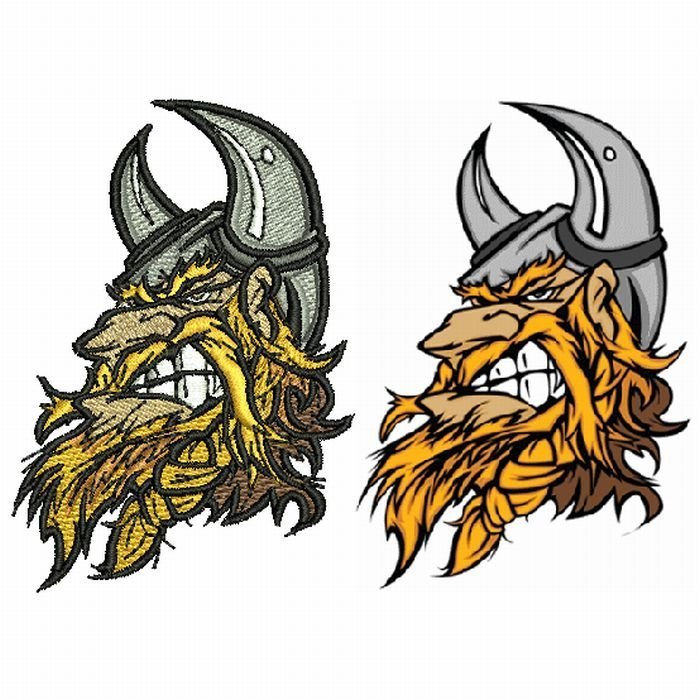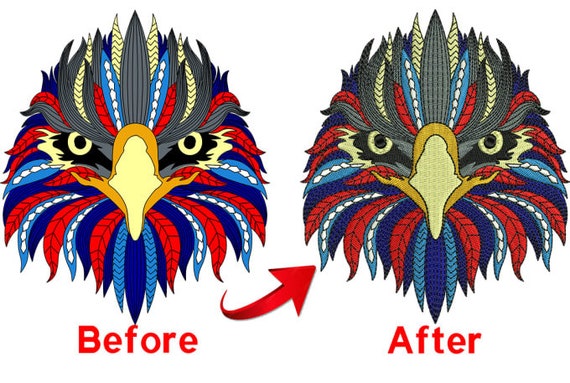Streamlining the Art of Needlework Digitizing: Step-by-Step Overview
Embroidery digitizing is a careful craft that requires accuracy and imagination. As innovation continues to advance, the digitization procedure has actually ended up being much more accessible, permitting lovers to bring their complex styles to life easily. In this overview, we will certainly unwind the intricacies of needlework digitizing, breaking down each step systematically to improve the process and empower both beginners and skilled embroiderers alike. Keep tuned to find exactly how you can simplify this complex art form and transform your creative visions into magnificently embroidered masterpieces.
Comprehending Embroidery Digitizing Software Program
Needlework digitizing software application acts as a vital device for transforming detailed layouts into digital styles compatible with needlework equipments, promoting exact sewing and personalization. This specialized software enables individuals to import numerous image data layouts, such as JPG or PNG, and transform them into needlework machine-readable layouts like DST, EXP, or PES - Digitizing for Embroidery. By making use of features like stitch modifying, rug alternatives, and string color selection, digitizing software application allows individuals to regulate every facet of the design process
Furthermore, advanced embroidery digitizing software application uses devices for developing intricate layouts, adjusting stitch density, and incorporating complex information. Individuals can additionally sneak peek the layout prior to sewing it out, ensuring accuracy and lessening mistakes. Additionally, lots of software application provide automatic functions that help improve the digitizing process, conserving effort and time.
Recognizing the abilities of needlework digitizing software program is important for achieving premium cause embroidery projects. By mastering this tool, needlework lovers and experts can unleash their creativity and bring intricate designs to life with accuracy and performance.

Picking the Right Design File
After familiarizing yourself with the capabilities of embroidery digitizing software, the following crucial action in the process is selecting the right layout apply for your task. Digitizing for Embroidery. When selecting a style apply for embroidery digitizing, it's important to consider the complexity of the design, the dimension of the end product, and the kind of fabric you will certainly be dealing with
For complex styles with fine details, a high-resolution image or vector file is recommended to ensure that the needlework equipment can accurately replicate the style. Additionally, the dimension of the last item plays a considerable function in selecting the best design documents. Larger layouts may call for greater resolution documents to keep clarity and intensity.
Furthermore, the kind of fabric you will be stitching on affects the choice of style documents. Different materials might call for adjustments in the style documents to ensure that the stitches are appropriately straightened and the style looks like intended. By very carefully picking the right design data based upon these elements, you can establish on your own up for an effective embroidery digitizing process.
Digitizing Tools and Techniques
Utilizing specialized software application and accuracy strategies, digitizing devices are essential in transforming elaborate styles into embroidery-ready data. Needlework digitizing software program, such as Wilcom, Hatch, or Embrilliance, gives the essential system to transform art published here work right into stitch information. These programs supply attributes like stitch editing, underlay options, and text devices to ensure the design translates perfectly onto material.
One of the essential techniques in digitizing is creating a clear path for the embroidery machine to follow. This involves digitizing each component of the layout with accuracy, figuring out stitch kinds, densities, and directions. By using devices like digitizing tablet computers or software-specific plugins, embroiderers can attain a high degree of precision in their digitized styles.
Moreover, grasping the art of rug stitching is crucial for producing top quality needlework. Underlay sewing supports the fabric and creates a foundation for the layout, making certain that the end product is both visually appealing and long-lasting. By understanding these digitizing tools and strategies, embroiderers can boost their craft and bring detailed styles to life with accuracy and performance.
Customizing Stitch Kinds and Instructions
Having established a foundation in digitizing tools and techniques, a vital element ahead of time needlework craftsmanship depends on customizing stitch types and directions with accuracy and function. The option of stitch types can significantly influence the general appearance and appearance of the embroidered design. Satin stitches, known for their smooth and glossy finish, job well for producing boundaries and message. On the other hand, fill stitches are ideal for covering bigger areas successfully. By tactically combining these stitch types, embroiderers can attain deepness and measurement in their designs.
Additionally, the instructions of stitches plays an essential function in boosting the visual appeal of the last needlework. Numerous stitch directions can add structure, emphasize specific aspects, and develop aesthetic interest. Changing the angle of stitches can mimic motion or all-natural patterns like hair or plumes. By trying out with different stitch angles and patterns, embroiderers can bring their designs to life with exceptional information and details. Mastering the art of customizing stitch types and directions equips embroiderers to unleash their creative thinking and boost the top quality of their work.
Screening and Refining Your Digitized Style
To ensure the accuracy and high quality of your Recommended Site digitized style, complete screening and refinement are essential action in the embroidery digitizing process. When you have actually finished the digitization of your design, it is vital to check it prior to continuing with the actual embroidery. Evaluating enables you to determine any type of prospective concerns such as string breaks, sew density issues, or layout distortions that may impact the result.

After screening, it Recommended Site is very important to fine-tune your digitized design based upon the responses from the test sew-out. This may include tweaking stitch settings, changing densities, or making modifications to the total style to accomplish the desired result. By iterating through screening and improvement, you can adjust your digitized design to perfection before moving forward with the actual embroidery process.
Verdict
Finally, grasping the art of embroidery digitizing requires a comprehensive understanding of the software program, picking the right design documents, using digitizing devices and methods, customizing stitch kinds and directions, and screening and fine-tuning the digitized layout. By complying with these actions, embroiderers can simplify the digitizing procedure and create high-quality stitched layouts with precision and performance.